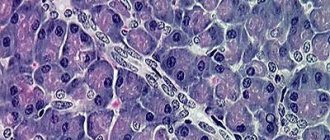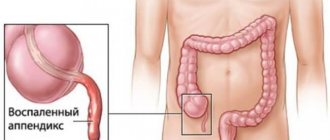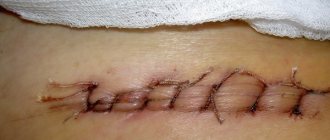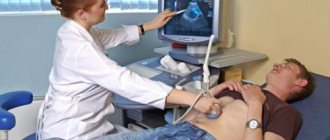When it comes time to undergo a stomach examination, at the WMT clinic the patient can choose: colonoscopy or colonoscopy under anesthesia. We tell you how the second option differs from the first and what advantages it has.
Endoscopy under anesthesia
is an examination of the colon with an endoscope with a video system that shows the organs and mucous membrane from the inside. The endoscopist inserts the endoscope tube through the anus, so the examination causes discomfort. To exclude it, the anesthesiologist-resuscitator administers a sedative. The patient falls asleep and does not feel pain or movement in the abdomen when the doctor advances the tube. For those who are undergoing a colonoscopy for the first time or are concerned, the procedure under anesthesia becomes the first alternative to FCS.
The doctor’s task is to examine the mucous membrane of all parts of the colon, and, if necessary, perform diagnostic tests, for example, a biopsy for analysis in the laboratory. During the procedure, the endoscopist can also remove polyps - new growths on the mucous membrane.
Benefits of having a colonoscopy while you sleep
Endoscopic examination in a dream differs from diagnostics without anesthesia in terms of comfort. In many European countries, according to standards, the study is carried out only with sedation, since without medicated sleep the patient may accidentally move, which risks injuring the intestines.
Advantages:
- Inspection time is reduced. The patient cannot interfere with or stop the examination.
- There is no pain when inserting a tube into the colon.
- If you need a colonoscopy with biopsy or removal of polyps, your doctor can do them right away. Minor surgeries are painless and are completed 10-15 minutes faster than a colonoscopy without sedation.
- It is psychologically easier to endure the procedure. Under the influence of a sedative drug, relaxation occurs.
- The drug is effective for up to one hour. At this time there is no deep sleep, as during a major operation. Compared with intravenous anesthesia, sedation reduces the risk of complications on the cardiovascular system.
What to expect on the appointed day?
- The procedure takes only 30-45 minutes. You will be asked to wear a hospital gown that opens at the back or special pants with a slit.
- You will also be asked to wear an oxygen mask or have small tubes placed through which oxygen will be supplied to your nose. You may be given an intravenous drip of all the necessary medications. You will likely be given a sedative and pain reliever to help you feel comfortable during the procedure.
- The doctor will ask you to lie on your left side and insert a colonoscope into your intestines. To make the procedure as easy as possible, a Vaseline-based lubricant will be used.
- Air will also be forced into the intestine to open the lumen and facilitate the movement of the chamber. This can cause discomfort, discomfort, bloating and gas. Since the instrument is flexible, the doctor can rotate it in the intestine if necessary.
- Images from the camera are transferred to the monitor. During the diagnosis, you may be asked to change your position, for example, turn from your side to your back so that the doctor can look at the area from different angles.
- They may also take a tissue sample from you for laboratory analysis, which will tell you whether it contains malignant or benign cells. During the procedure, intestinal polyps may be removed. It is painless and is performed using a small instrument passed through the colonoscope.
- Sometimes it is not possible to examine the intestines completely. This can happen if it is not completely empty, or if the camera cannot get around the bend. Therefore, you may be asked to be retested or choose a different procedure.
Colonoscopy with polyp removal
When malfunctions occur in the intestines, growths appear on the mucous membrane - polyps.
They are benign and grow without symptoms, but can become malignant, that is, degenerate into malignant neoplasms. In order not to miss the growth of the tumor, colonoscopy is performed regularly - for men and women over fifty, once every 5 years or as indicated. Polyps can be removed immediately if it is safe for the patient. When the polyps are large or there are too many of them, the tumors are removed during a separate procedure. Removing polyps is called a polypectomy. Together with the endoscope, forceps or a loop are inserted into the intestine. The forceps pinch off a piece of the tumor, and the loop excises it. The material is placed in a container and sent for analysis to the laboratory.
Polyps do not disappear or dissolve. The only way to get rid of tumors is to remove them.
Is it possible to replace the FCC with something?
As an alternative, FCS often offers irrigoscopy and CT. In fact, these techniques cannot fully replace endoscopic examination. They do not allow a detailed and targeted examination of the tumor, do not detect small defects in the mucous membrane and do not allow a biopsy. In addition, these techniques involve the use of radiation, which imposes certain restrictions on the timing of re-diagnosis.
Fibercolonoscopy is the optimal method for assessing the condition of the walls of the large intestine and the most informative way for the early detection of colorectal cancer.
Unfortunately, more than 1/3 of malignant colon tumors are diagnosed at late stages, which explains the high mortality rate from this disease. In many cases, this is due to patients’ unreasonable refusal of recommended regularly repeated endoscopy. The lack of information content and reliability of screening studies carried out in clinics, with preference for laboratory or X-ray diagnostics, is also of certain importance.
Indications for colonoscopy
The FCC is appointed to determine the cause of complaints. Usually this:
- Constipation or diarrhea
- Sudden weight loss
- Blood in stool or on paper after bowel movement
- Frequent attacks of heartburn
- Loss of appetite
- Abdominal pain, heaviness and bloating
If the attending physician wants to monitor how the picture has changed, he prescribes a procedure after six months/year. A proctologist, gastroenterologist or therapist compares the condition of the mucous membrane before and after treatment and adjusts the treatment tactics.
As a preventive procedure, colonoscopy is performed for everyone over 50 years of age. To exclude malignant tumors in the intestines and remove polyps in a timely manner, you need to do FCS once every 5 years or as directed by your doctor.
People who have had gastrointestinal cancer in their first degree of family (parents, children) are at risk. In this case, the procedure must be done 10 years earlier than according to standards.
Colonoscopy detects diseases:
- Ulcer
- Diverticulosis
- Colitis
- Inflammatory diseases
- Crohn's disease
- Neoplasms (benign polyps, malignant tumors)
What can be revealed
FCS with anesthesia allows you to:
- carry out differential diagnosis between chronic diseases with colitis syndrome;
- identify diverticula;
- detect polyps and other benign neoplasms and remove them endoscopically;
- detect malignant tumors (cancer) of any form at the earliest stages, when they are still small in size and limited to the mucous membrane and submucosal layer.
At the moment, FCS is the most informative, reliable and safe way to assess the condition of the wall of the large intestine and identify any neoplasms located here.
Contraindications
There are cases when a colonoscopy is postponed or not performed because the risk of harm outweighs the benefit. These situations include absolute contraindications:
- Intestinal perforation
- Cardiovascular failure
- Myocardial infarction in the acute stage
- Respiratory failure
- Stroke in the acute stage
- Shock
- Peritonitis and colitis
In case of relative contraindications, colonoscopy is temporarily not performed.
Relative contraindications:
- Arrhythmia
- Poor preparation
- Local inflammation in the anus
- No echocardiography (ECG)
- Open operations less than 14 days ago
- ARVI, fever
Preparing for a colonoscopy
When registering for the WMT clinic, the manager sends a memo with a detailed description of the diet and preparation for FCS under anesthesia.
- Preparation consists of a diet 3 days before the test and bowel cleansing the day before and on the day of diagnosis.
- To prevent damage to the mucous membrane, the patient does not eat spicy foods, seeds, cookies and crackers. You should not eat bread, pasta, vegetables and fruits to reduce gas formation in the abdominal cavity. The gas impairs the visibility of the endoscope, so in addition to the diet on the day of the colonoscopy, you need to drink an antifoam-simethicone, for example, Espumisan. During preparation, you should not drink sweet carbonated drinks, alcohol, jelly and compotes.
- The night before and the morning before the FCS, the patient cleanses the colon with one drug - Moviprep, Fortrans, Esiclene or Lavacol. It is necessary to adhere to the medication regimen to eliminate food residues in the intestines.
- Eliminate water 2-4 hours before. You are not allowed to smoke on the day of the examination.
- To do a colonoscopy in your sleep, you need to bring the ECG result so that the anesthesiologist confirms that there are no contraindications from the cardiovascular system. Electrocardiography can be done at the WMT clinic before the FCS by appointment.
- There is no need to take blood tests.
Alternatives to the procedure
Although this procedure is considered the best method for examining the bowel, it may not be suitable for everyone. If you are unable or unwilling to undergo the procedure, your doctor will offer you other options. The main possible alternatives are listed below:
- Irrigoscopy. A liquid containing barium (a substance that shows up in X-rays) will be injected into the intestines through the anus. Thus, on abdominal x-rays, the intestines will be visible from the inside.
- Virtual colonoscopy. This test is done through a CT scan, which uses X-rays to produce three-dimensional images of the colon and rectum. In order to expand the lumen, air will be pumped into the intestines.
- Sigmoidoscopy. This procedure is similar to a colonoscopy, but it uses a smaller device to examine the rectum and lower part of the colon.
It is also recommended to postpone the procedure while you are pregnant, unless you have special reasons for deciding to undergo it: diagnosis during pregnancy can only be carried out if there is a threat of life-threatening diseases for which the only treatment alternative is colorectal surgery, or if suspected colorectal cancer. In most cases, the procedure is painless, so there is practically no reason to fear or refuse the procedure.
Procedure for conducting the examination
Fibercolonoscopy under anesthesia includes several stages:
- Preparation with diet and colon cleansing. This is an important part for diagnostics, so you must follow all the recommendations specified in the instructions.
- The endoscopist gets to know the patient and clarifies the complaints. For diagnosis, you need to take an ECG result so that the anesthesiologist-resuscitator confirms that the examination will be safe. Come in comfortable separates, such as trousers and a jacket. The nurse will provide disposable underwear and slippers for changing clothes.
- The nurse places the patient on a chair, places the legs and arms so that it is comfortable
- The anesthesiologist connects sensors that show his pulse and heart rate on the monitor. Then a sedative is injected into the vein, and the patient falls asleep.
- The endoscopist begins the examination - first treats the endoscope insertion site with an anesthetic, and then moves the instrument through the intestine.
- If, during an examination, the doctor notices a suspicious area of the mucous membrane, sees a tumor or mucus, he conducts diagnostic tests. This extends the procedure by 5-10 minutes.
- When the endoscopist has examined all parts of the colon, he removes the tube. All actions are painless.
- After the examination, the patient is placed on a couch behind a screen, where no one enters. The nurse monitors the person's condition until he fully awakens. It will take 10-15 minutes to wake up.
- Then the doctor explains the results of the examination and issues a conclusion.
FCC in ICLINIC: competent approach and modern technologies
ICLINIC Medical Center specializes in the prevention and diagnosis of cancer of the digestive system. Our diagnostic equipment is certified, has high grades and is additionally equipped with special software to increase the information content of studies. The colonoscopes used have a reduced tube diameter, high-precision cameras and monitors, and allow virtual chromoendoscopy of the smallest formations identified. All this ensures high diagnostic information content and reliability of the FCS.
The base price for video colonoscopy at ICLINIC in St. Petersburg is 5.5 thousand rubles. It may change during additional consultations with an anesthesiologist, endoscopist, leading specialist E.I. Levchenko, when using anesthesia of varying complexity, when taking a biopsy.
The affordable price of colonoscopy at our ICLINIC center in St. Petersburg is an opportunity to undergo a highly accurate examination of the large intestine using high-quality equipment and in comfortable conditions. Each patient receives a qualified written report drawn up in accordance with current clinical guidelines and protocols. The ICLINIC doctor also gives recommendations on the prevention and treatment of identified changes, and will suggest the optimal program for further examination.
To do a videocolonoscopy at ICLINIC, you can contact our administrators using the feedback form or by calling the phone numbers listed on the website.
Answers to frequently asked questions and useful information
How long does a colonoscopy take?
The total duration is 10-15 minutes if endoscopy is performed without biopsy and removal of polyps. When minor surgical intervention is needed, the time is increased by 5-10 minutes.
Features of performing colonoscopy under anesthesia
The difference between a sleep examination and a procedure without sedation is that pain, emotional distress and fear are excluded. At the WMT clinic, we offer colonoscopy under anesthesia, as safety increases (there is no fear of “piercing the intestine”), and the doctor conducts the examination without distractions or haste.
Is recovery required after a colonoscopy?
Waking up from drug-induced sleep, you may feel drowsy and disoriented in space, so for 4 days after FCS, you should not drive or play sports under anesthesia. Do not stop your diet suddenly after the procedure. Introduce foods gradually to allow the stomach to adapt.
What to do if a colonoscopy makes you afraid?
If a colonoscopy makes you afraid, look at the photos of how the examination is carried out in our clinic.
Visualization improves perception and reduces fear of the unknown. The second recommendation is to read reviews about the endoscopist you are going to see for an intestinal colonoscopy. Reviews share stories and encourage positivity for future patients.
The third recommendation is to undergo the FCS under anesthesia to get pain relief and emotionally calm down.
Colonoscopy for anal fissure
Anal fissure is a spontaneous rupture of the mucous membrane of the anal canal due to inflammation and constipation during defecation. If this defect is present, pain may occur during diagnosis. To make the examination painless, FCS is performed under anesthesia. The patient falls asleep for 15-30 minutes, and the doctor examines the intestines. During an examination under anesthesia, the condition of the subject is monitored by an anesthesiologist-resuscitator.
Colonoscopy of the intestine for hemorrhoids
Hemorrhoids are not a contraindication to FCS if there is no bleeding or pain. If the disease is in an acute stage, you must first contact a proctologist and then undergo an examination.
What parts of the intestines does the doctor check?
During endoscopy:
- Colon examination
- Colonoscopy of the rectum
- Examination of the cecum
- Partial colonoscopy of the small intestine (10-30 cm distal)
Is there a difference between colonoscopy and colposcopy?
Yes, sure. Colposcopy is performed on girls annually after the start of sexual activity. It is an examination of the vagina and cervix to detect pathologies, inflammation, and neoplasms. To put it simply, colonoscopy is gastroenterology and proctology, colposcopy is gynecology.
Magnetic resonance imaging (MRI)
Magnetic resonance imaging is a painless method for examining the intestines.
Magnetic resonance imaging is a safe method for examining the intestines, without causing pain to the patient.
MRI will allow you to find out whether the patient has chronic diseases of the gastrointestinal tract. Before starting, it is important to cleanse the intestines with an enema. Next, the patient receives the contrast agent. The duration of the procedure is very short (only 10 minutes).
Thanks to the MRI method, a doctor specializing in this problem will be able to accurately determine the severity of the disease, examine each section of the intestine, and find metastases (if any). Also, thanks to magnetic resonance imaging, the presence of malignant tumors can be detected.
Reviews by patients
Victoria Kravchuk
Today I underwent gastroscopy and colonoscopy in my sleep at the WMT clinic with Viktor Viktorovich Golfand. A wonderful specialist, he explained everything, put me at ease, the nurses are wonderful, they do everything for comfort, the hospital is beautiful! As soon as I came to my senses, they helped me and said: “Everything is fine with you, let’s wake up!” I recommend this wonderful clinic and doctor to everyone!
Dmitry Lobchuk
I had a colonoscopy done in a dream with Alexander Yakubovich. Only positive emotions! The doctor is incomparable and a specialist - nothing hurt after the procedure from the word “at all” (even in the presence of aggravating circumstances in the form of hemorrhoids and fissures), the pain-relieving effect is excellent! He listened to all the complaints, was very tactful and polite, you felt like you were talking with an old friend. I recommend this specialist to everyone! Special thanks to the team, anesthesiologist and nurse, thanks to you the fear of such studies disappears.
Daria Davydenko
I would like to express my deep gratitude to Viktor Viktorovich and the entire team who works with him. FGDS and colonoscopy were performed “during sleep”. Everything is done at the highest level. Everyone was very friendly and helpful. I will recommend it to everyone! Thanks a lot!
Elena Feodorovna
Alexander Yakubovich, please accept my words of gratitude! You know how to put me at ease from the first minutes of the meeting, there is no falsehood, your concern was absolutely sincere, I stopped being afraid as soon as I saw your kind smile. Thank you that there was no formality, you listened to everything, delved into everything, and after your phrase: “We’ll sort it out,” I was sure that I was in good hands. The study took place in a dream, I can’t say anything about it, I didn’t feel it, I don’t remember. No discomfort after it, comprehensive information about the results in addition to what is written. Organization and execution of work at the highest level!











